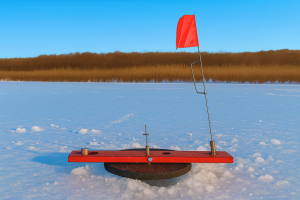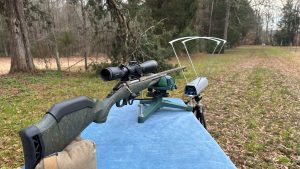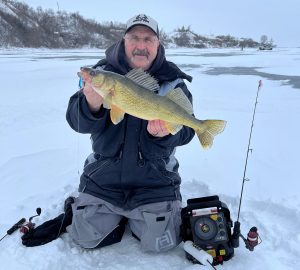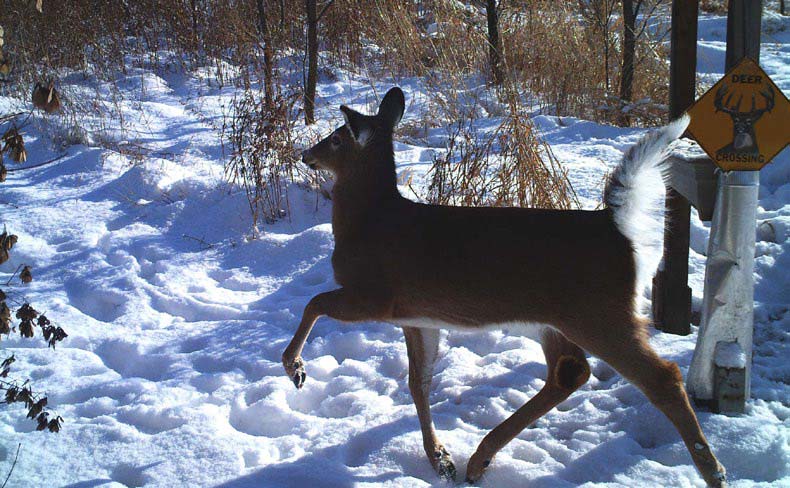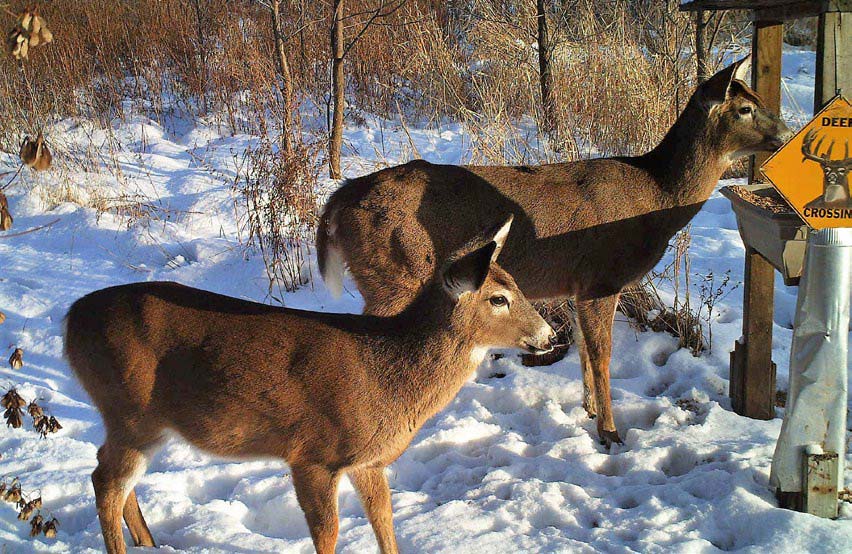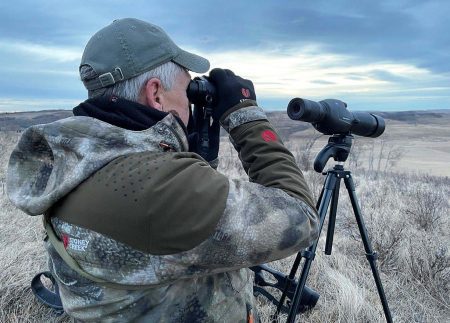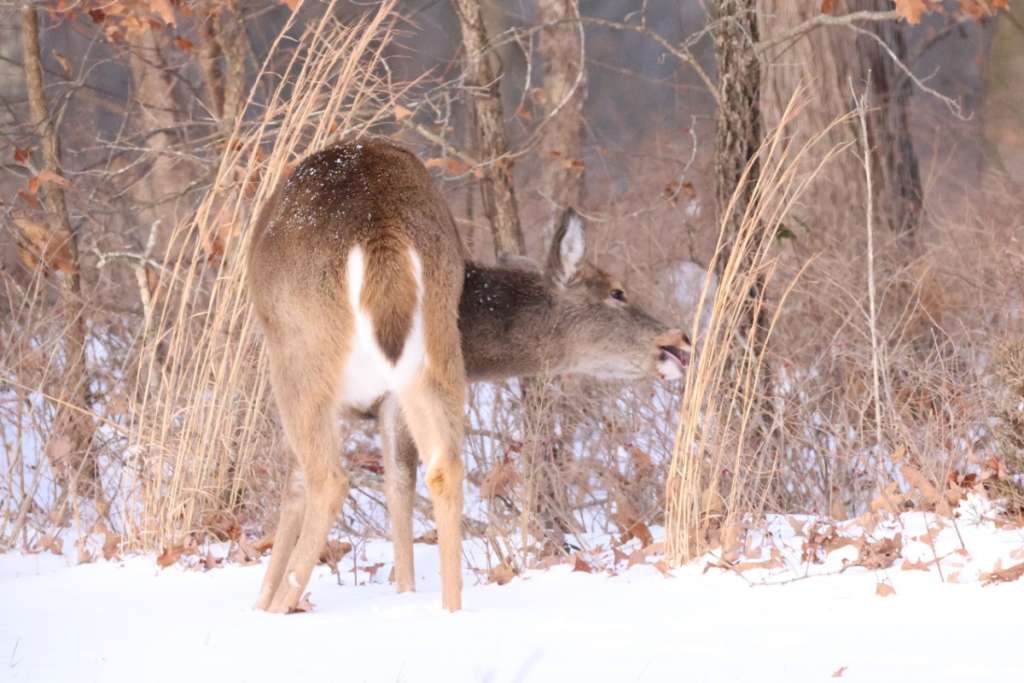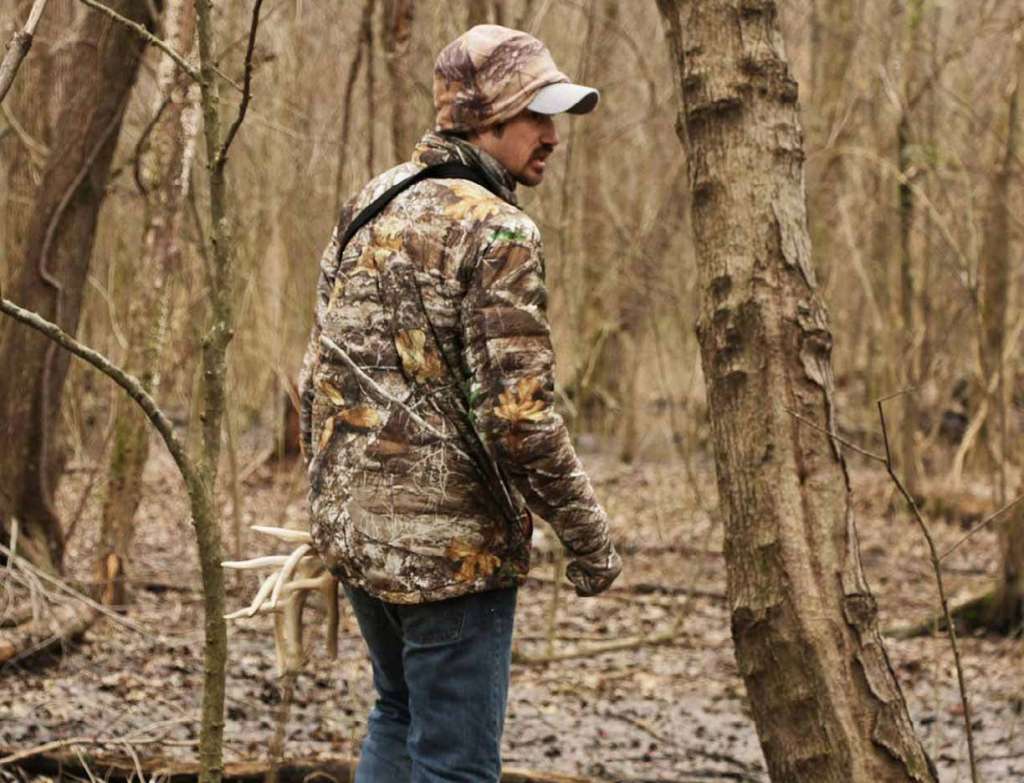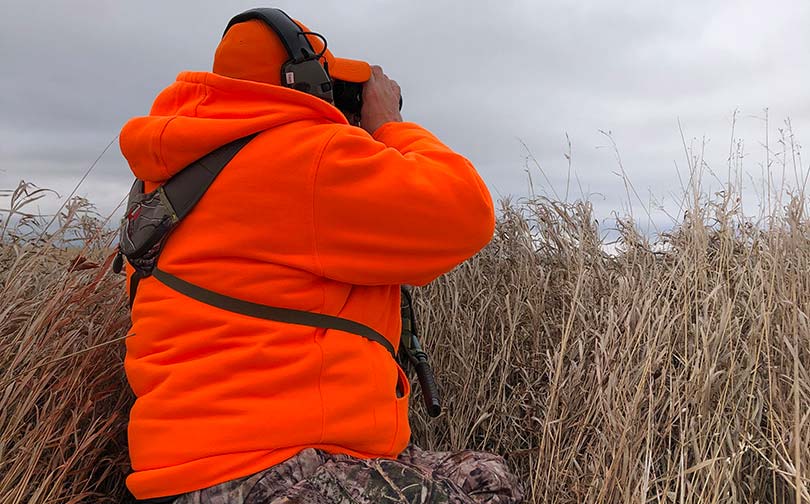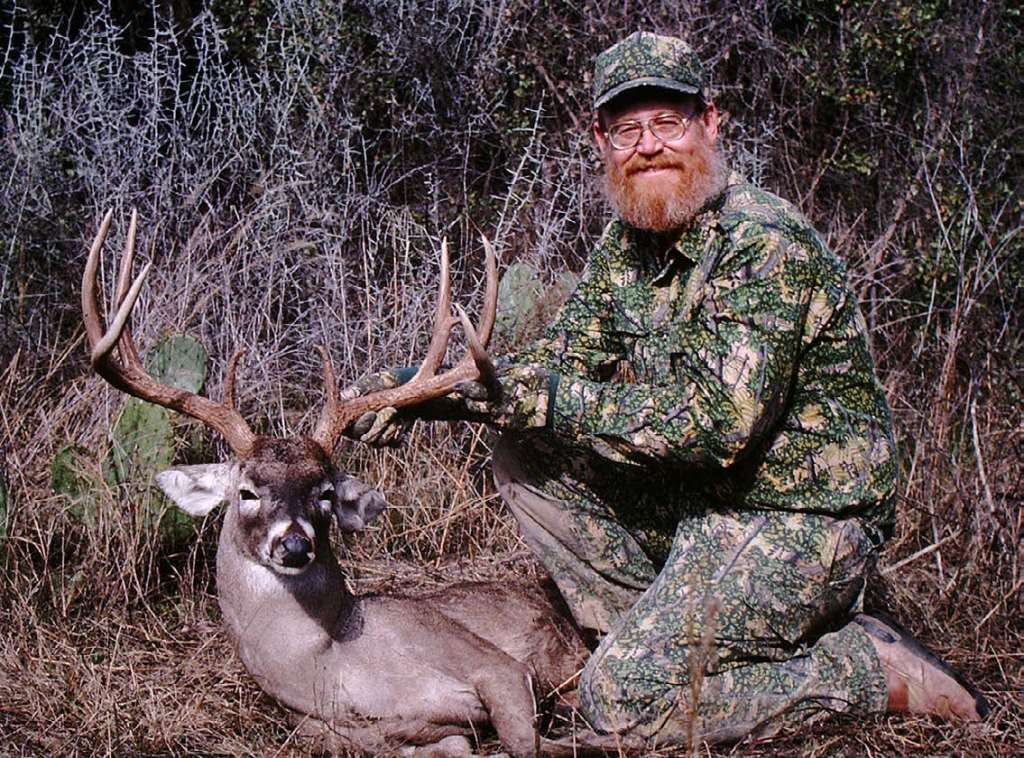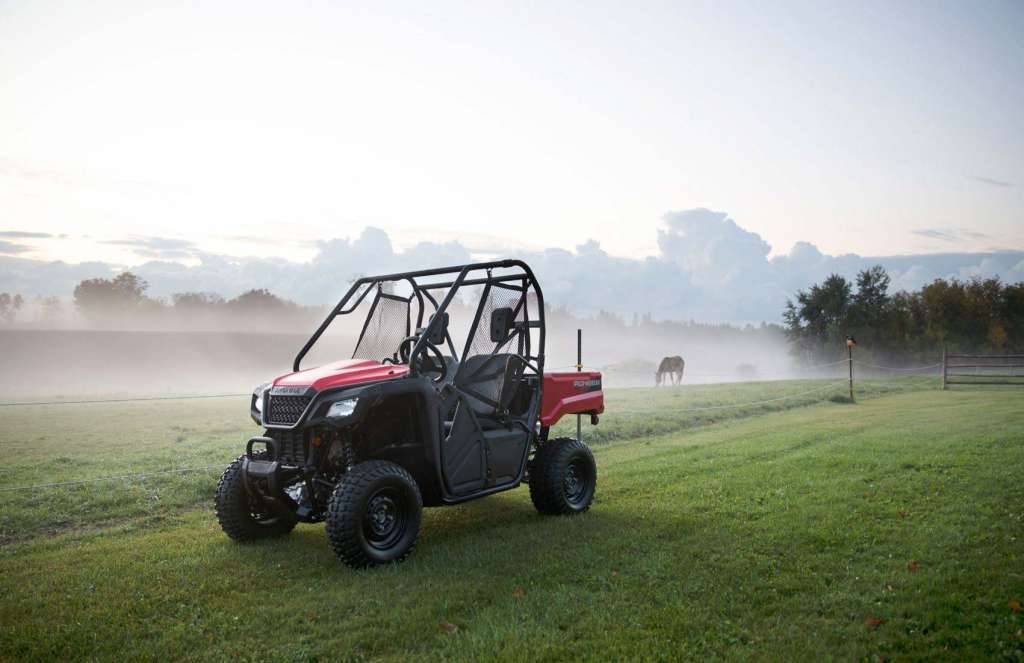As a dedicated whitetail conservationist, wildlife biologist and big game hunter, I have had the pleasure of managing winter whitetails for more than 25 years. From deeryard operations in the mountains of Quebec, to counting ‘pellet groups’ in Central Ontario as part of a Fish & Wildlife program, to today managing my own backyard program in the National Capital Region. You might say managing winter whitetails is a pet project of mine, and an activity I take quite seriously!
Backyard deer feeding is an enjoyable pastime and can be of benefit to whitetail herds as snow depth increases. Having done it for so long, I learned a few tricks along the way to assist those with their own feeding programs, starting with the number 1 rule of winter deer feeding, consistency. Once you begin distributing supplemental feed, it is imperative to continue throughout the winter, as a white-tailed deer’s digestive system will adapt to your supplemented diet.
Wildlife management agencies in Canada tread lightly when it comes to backyard feeding, for the simple fact that most would-be deer mangers are not familiar enough with a whitetail’s dietary requirements, or the implications of supplemental feeding. Understanding the basics before you start your own backyard feeding goes a long way to ensuring a more productive and helpful winter program.
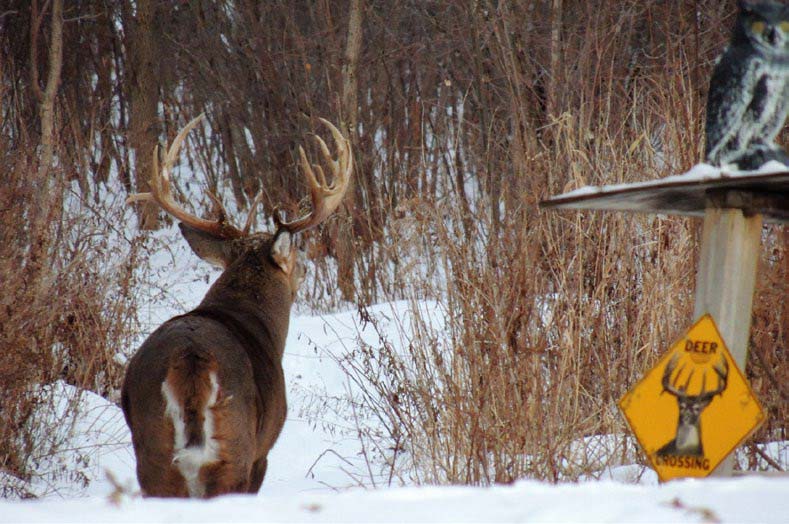
Feed Types
There are a few feed options when supplementing a white-tailed deer’s winter diet, which, in much of Canada is composed of woody tree browse. Backyard feeders take note that our food offerings are there only as a small ‘supplement’ to the deer’s natural winter browse intake, akin to feeding song birds at a bird feeder. We are not there to replace a whitetail’s natural diet entirely; this is one of the many misconceptions of backyard feeding.
After years of experimenting with different feed types, I have settled on a balanced blend similar ‘livestock grower pellets’, and composed of 14” Protein, 8 % Fiber, 3 % crude fat and 1% calcium. The use of whole corn, whole wheat or whole barley can cause digestive issues since these foods are high in starch. A starch overload in deer can spawn a harmful growth of Clostridium bacteria, often associated with over-feeding diseases in livestock. Whitetails provided with copious supplies of such cereal grains can also develop Acidosis, leading to infection and acid lesions in the digestive system. Sticking with pelletized livestock feed, similar to what other ruminants like cattle would consume, I found to be the safest and most beneficial for white-tailed deer.
Backyard Pitfalls
One of the potential pitfalls of winter-feeding is its impact on deer density. Large-scale feeding operations can see whitetail numbers that are too high during normal winters, thus depleting natural forage supplies. This tiesin with the concept of carrying capacity or the natural environment’s ability to offer life support for only a set number of animals based on available resources. The goal with any backyard feeding is to provide just a small supplement and not to replace natural feed completely. You also do not want to establish such large program that whitetails come from other areas thus taking up residence in new winter ranges unable to support them. Keeping your backyard program small scale, catering only to a localized population is the safest way to go.
Over-feeding can also lead to higher energy demands in whitetails, so avoid distributing an over abundance of feed for just a handful of wintering deer. Higher levels of aggression and fighting can also occur at feeders where dominant animals prevent others from feeding in a crowded environment, leading to increased stress. In years where I have more than, say, 5-6 wintering whitetails in my back bush, I ensure my feed is separated into small individual piles and not just distributed in my main feeding trough. This allows all members of your deer herd to feed without fear of reprisal.
Backyard Benefits
The main motivation for backyard feeding, of course, is to prevent loss of wintering deer due to starvation. Whitetail herds in Canada must contend with deep snow, limited access to natural forage and increased predation during the winter months. Supplemental feeding can be a real asset to the herd as a whole. Younger deer, for example, have higher energy demands and with increased difficulty wading through deep snow, winters are especially hazardous. Mature bucks enter the colder months having exhausted fat reserves during the rut, and when winters arrives they are usually in a weakened state; unable to replenish important fat levels.
One the most devastating ‘hidden’ effects of harsh Canadian winters is observed with adult does, and often results in death of fawns in the spring, during birth. Studies have shown that females with improved winter nutrition have fewer fawns die at birth, and increased fecundity rates, or the delivery of multiple fawns. Improved winter diet is beneficial to all members of the whitetail population, and is the cornerstone of any backyard-feeding program.
As dedicated hunters and conservationist, assisting our deer populations during difficult months can be fun and fulfilling. Maintaining a small backyard program, all these years, has afforded me an intimate glimpse into whitetail behaviour, rarely seen, and made for some great photo opportunities as well. I have observed fawns born in my backyard; develop into mature trophy bucks that return to my feeder each winter. Knowing I played a small part in their success is a good feeling indeed.
Good luck with your own backyard whitetail program this winter, I will see you in the great outdoors!
By Jeff Morrison
Per our affiliate disclosure, we may earn revenue from the products available on this page. To learn more about how we test gear, click here.

